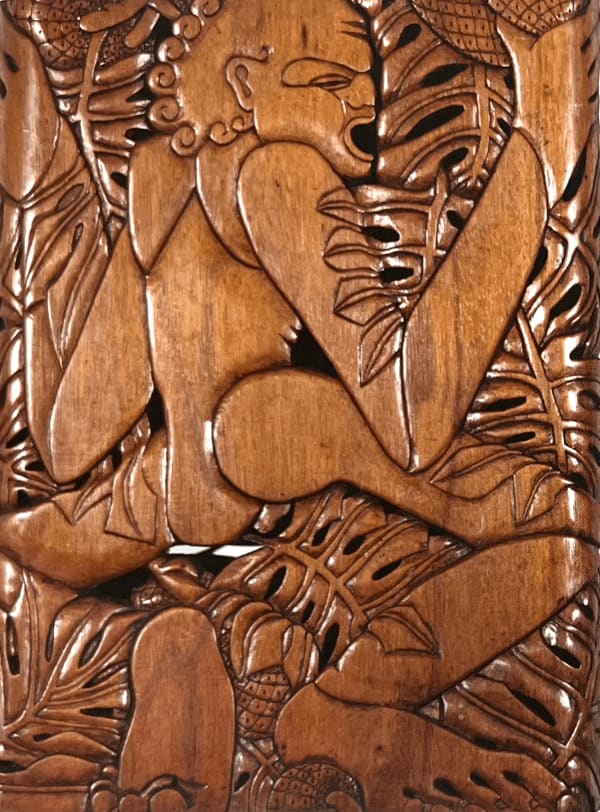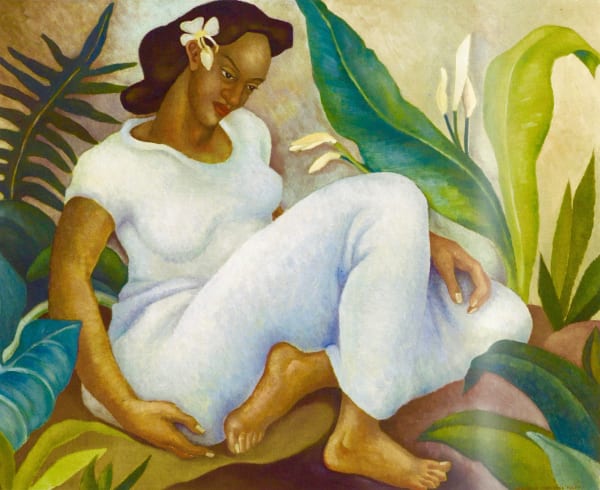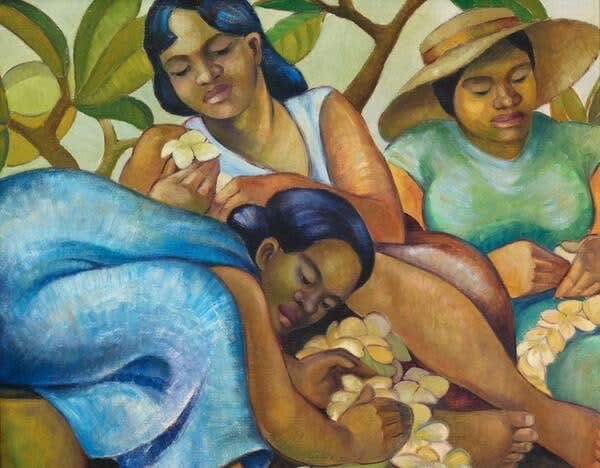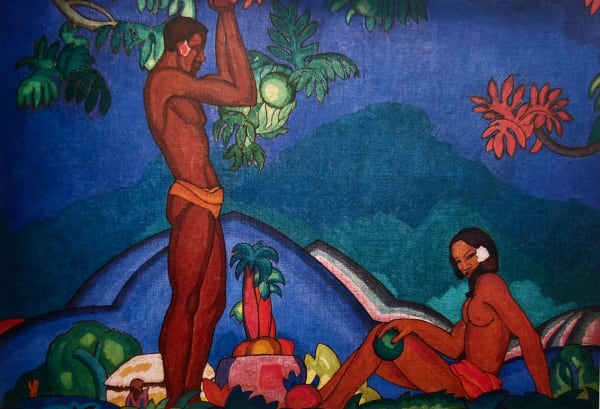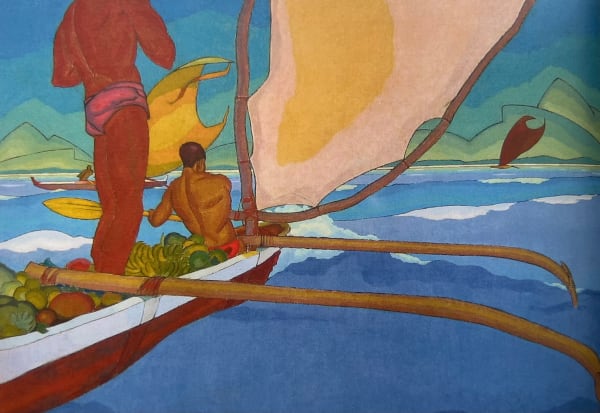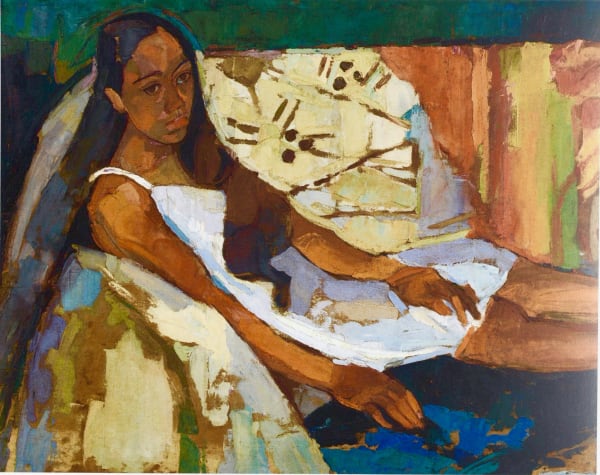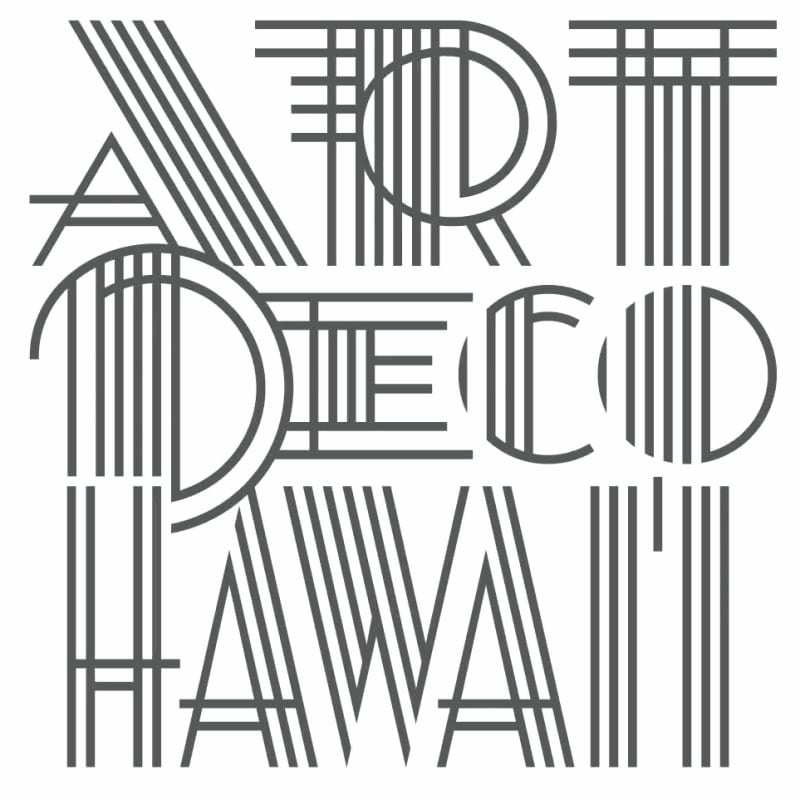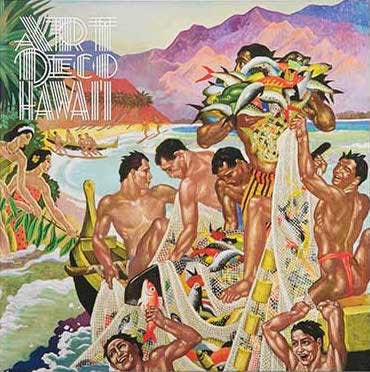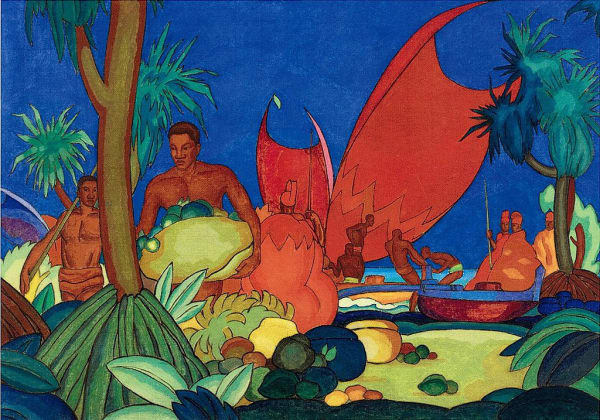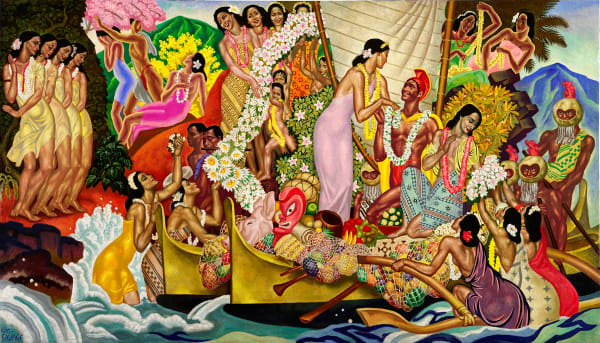Art Deco Hawaiʻi
Past exhibition
Artworks
Intro
The Honolulu Museum of Art presents Art Deco Hawai‘i, the first major museum exhibition to focus on the seductive Hawaiian take on the international Art Deco style, which flourished in the islands from the 1920s to the 1940s.
At once contemporary, classicizing, eclectic, and adaptable, Art Deco manifested itself in Honolulu and its environs as a schematized visual language based on the natural beauty and fabled past of the islands. As such, it served as a motivating source for modernism in the fine arts and a sustaining mode for constructing “paradise” for the tourism and advertising industries.
Art Deco Hawai‘i brings together a rich and representative array of paintings, sculpture, and works on paper to show how artists active in Hawai‘i during the interwar period—long considered to be isolated, conservative practitioners of watered-down avant-garde formulae—adapted the conventions of abstraction to the Deco aesthetic and developed a regional form of modernism centered on the islands’ singular sense of place.
At the core of the exhibition are two mural cycles—Eugene Savage’s six canvases created for Matson (on public view for the first time) and large-scale paintings by Arman Manookian that until 2010 hung at the Hana Hotel on Maui—both of which romanticize Hawai‘i’s early history as a celebratory spectacle of color, pattern, and movement within the Deco aesthetic. Works by Marguerite Blasingame, Robert Lee Eskridge, Cornelia McIntyre Foley, John Kelly, Genevieve Lynch, Lloyd Sexton, Madge Tennent, Georgia O’Keeffe, and others round out the exhibition and demonstrate how Hawai‘i’s most renowned 20th-century artists similarly applied Deco’s lyricism and elegance to create works that pictured the islands as a peaceful, timeless, and breathtaking locale that resonated with widespread cultural nostalgia for a perceived and distant “Old Hawai‘i.”
A section of Art Deco Hawai‘i is devoted to architecture, the decorative arts, advertising, and consumer products, illustrates the breadth of Art Deco’s presence in the Hawaiian market and its influence as a visual framework for dominant discourses on Hawai‘i, regardless of their accuracy. Through documentation of architectural and public art projects, and examples of jewelry, furniture, utilitarian objects, and graphic design, this section of the exhibition demonstrates how Deco was coopted in efforts to conjure and perpetuate an image of Hawai‘i as an Arcadia unspoiled by the urbanization that was ultimately transforming it, and thereby assert the allure of the islands for a mainland consumer class seeking exotic goods and luxury travel.
Installation
Catalogue
Presse







